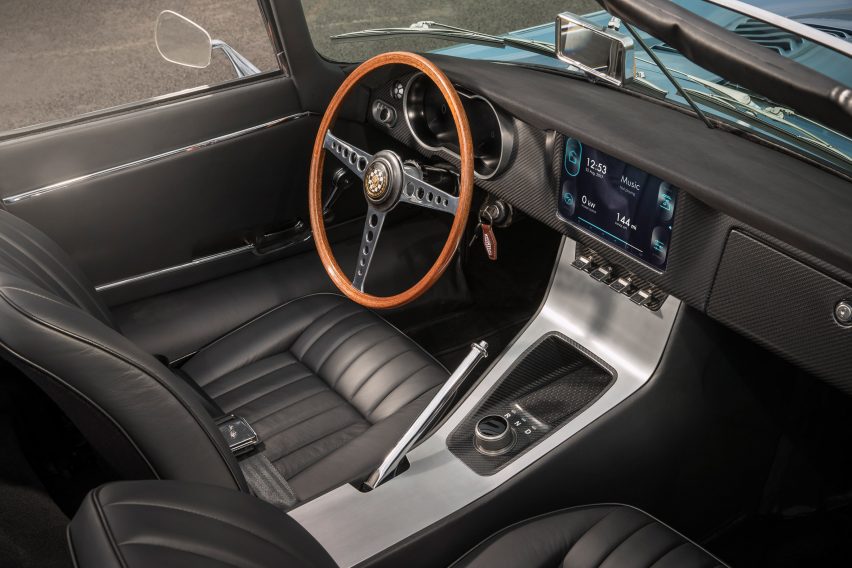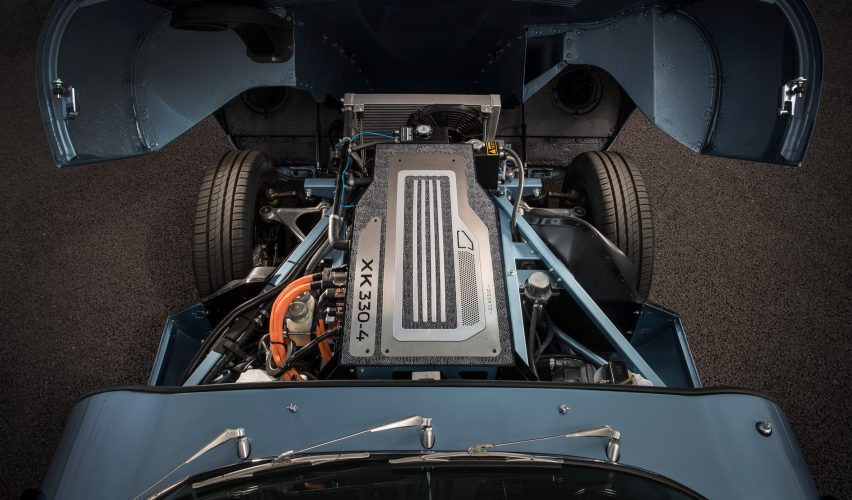Jaguar electrifies its classic E-type car
Jaguar has unveiled a zero-emissions version of its iconic E-type model, which it hopes will "future-proof classic-car ownership".
The luxury British motor company has created a new prototype of the 1960s sports car and equipped it with a fully electric engine. It will present the car at a tech festival at London's Central Saint Martins this weekend.
Engineered by Jaguar Land Rover's specialist Classic department, the E-Type Zero is designed to renew interest in classic cars, at a time when petrol engines are becoming increasingly unpopular.

The announcement comes after news that Jaguar Land Rover will stop making petrol and diesel cars as of 2020 – following in the footsteps of Volvo, which similarly plans to halt sales of non-electric models by 2019.
"E-type Zero combines the renowned E-type dynamic experience with enhanced performance through electrification," said Jaguar Land Rover director Tim Hannig.
"Our aim with E-type Zero is to future-proof classic car ownership. We're looking forward to the reaction of our clients as we investigate bringing this concept to market."

The E-type is widely considered to be an icon of the car industry, manufactured by Jaguar between 1961 and 1975. When it was released, Italian race car driver Enzo Ferrari described it as "the most beautiful car in the world".
Because of its iconic status, Jaguar was keen to keep the model as close to the original as possible – in both appearance and performance.
The electric powertrain installed is of a similar weight and size to a petrol engine, meaning that the car's design – including its breaks and suspension – has not had to be changed. It will be able to achieve zero to 62 miles per hour in just 5.5 seconds.

"In order to seamlessly combine the new electric powertrain of E-type Zero with the dynamic set-up of the original E-type specification, we have limited the vehicle’s power output," explained Hannig.
"We have integrated the new electric powertrain into the existing E-type structure, which means a conventional engine could be reinstalled at any point," he added. "We think this is essential as it ensures a period Jaguar remains authentic to its DNA."
Jaguar revealed its first electric car, the I-Pace, in 2016. When it eventually hits the roads in 2018, the British company also claims the car will be able to travel 310 miles (500 kilometres) on a single charge and will be able to accelerate from zero to 62 miles per hour in approximately four seconds.
The E-type Zero will be able to travel a shorter distance on a single charge, about 170 miles (270 kilometres). Its battery takes six to seven hours to fully replenish.
The Jaguar E-type car comes after the UK announced that it is set to ban the sale of all diesel and petrol vehicles from 2040, mirroring actions of other countries including France, the Netherlands and Germany.
It will be on show at Central Saint Martins this weekend at Jaguar Land Rover's inaugural Tech Fest event, alongside other concept vehicles designed by the company.